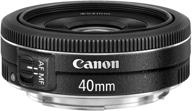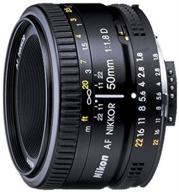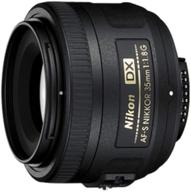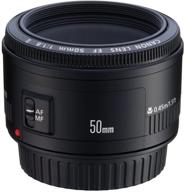
Review on 📷 Enhanced Canon EF 100mm f/2.8 Macro USM Fixed Lens for Canon SLR Cameras by Marco Mooney

One of the best lenses ever made, hands free
This is by far one of the sharpest lenses on the market, not even worse than the most expensive lenses from Canon, Nikon and even Zeiss (whose owners of Nikon and Zeiss will be foaming at the mouth at what he hears, but the results of shooting with this lens don't lie). It's also one of the most versatile, being a true macro lens that doubles and even triples as an incredible portrait lens and fast medium telephoto lens. Its L version, which is twice as expensive, actually only produces an optical image. stabilization on the table, but its overall sharpness in practice is no better than this "normal" lens. Additionally, the design of this lens controls flare so well that you can save money on a lens hood. It has a second aperture that makes it almost impossible to get flare without really trying. In that case, you might be disappointed as it's really difficult to get flare even on purpose. This is an impressive feat of engineering from Canon. In addition, focusing is very fast when the limiter switch is set so that it does not fall into the macro range. But even with the limiter off, it doesn't tend to focus except in low light or at very close ranges. In low light, turn on the focus limiter and you shouldn't have any problems. And if you're shooting macro, it's better to focus manually anyway. And again I cannot praise the sharpness of this lens. Edge-to-edge detail is sharp and chromatic aberration is very low. In fact, I don't think I've ever used another lens with such well-controlled fringing, even at an open aperture of f/2.8. While vignetting is noticeable at full aperture, it's not that bad. as well as other lenses like the 85mm f/1.8 (much flashier, but actually quite good for portraits, which is what this lens is aimed at). On a full frame sensor (or on 35mm film) there can be a 1 to 1 reproduction, meaning that the objects you shoot from the closest focusing distance will be the same size on the sensor as they are in real life. Imagine how much detail you could get from the print of a coin if the image recorded on film was the same size as the penny itself. This is how macro lenses capture so much detail in small objects that our naked eyes could not see. On APS-C sensor cameras like Rebels, 60D, 70D etc. this results in effective 2-to-1 playback (i.e. 2x zoom) as APS-C sensors are about half the size of full frame sensors. So if you have a full frame sensor and an APS-C sensor with the same resolution, you need to crop the image from the APS-C sensor less than the image from the full frame sensor to get the same thing. overall visible increase. This results in more detail in the image from the APS-C sensor. Because of this, I used the Rebel specifically for macro photography, leaving my 5D for portrait and landscape photography. Finally, the construction of this lens is simply reliable. It feels sturdy, even with its plastic body (albeit made of high-quality plastic). It always feels great in your hands, no matter how many times you pick it up. I now return to my opening speech. This lens is incredible. This is arguably one of the best all-round lenses ever made (and it's hard to say it wasn't). I never get tired of it, especially since macro photography opens up a whole new world. You will be amazed how stunning and interesting your garden can be when you go on safari with this lens. Add in stunning portraits, great sports and other shots, and it's easy to justify the high price tag. I'm attaching some portraits and macro shots I took of him.
- Good product for the price
- weak
New products
Comments (0)
Top products in 👓 Lenses

Canon EF 40mm f/2.8 STM Lens - Fixed Black (6310B002) for US Cameras

76 Review

Nikon 50mm f/1.8D Lens: Perfect for Nikon DSLR Cameras!

97 Review

Nikon 35mm f/1.8G Auto Focus Lens for Nikon DSLR Cameras - Black (Model 2183)

125 Review

Canon EF 50mm f/1.8 II Fixed Lens - Discontinued by Manufacturer

93 Review







